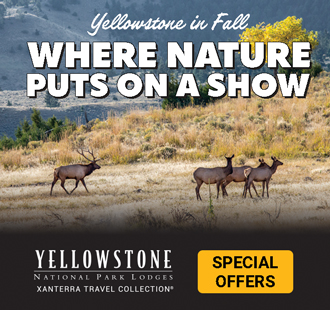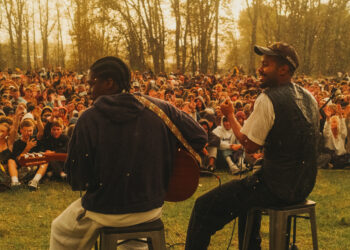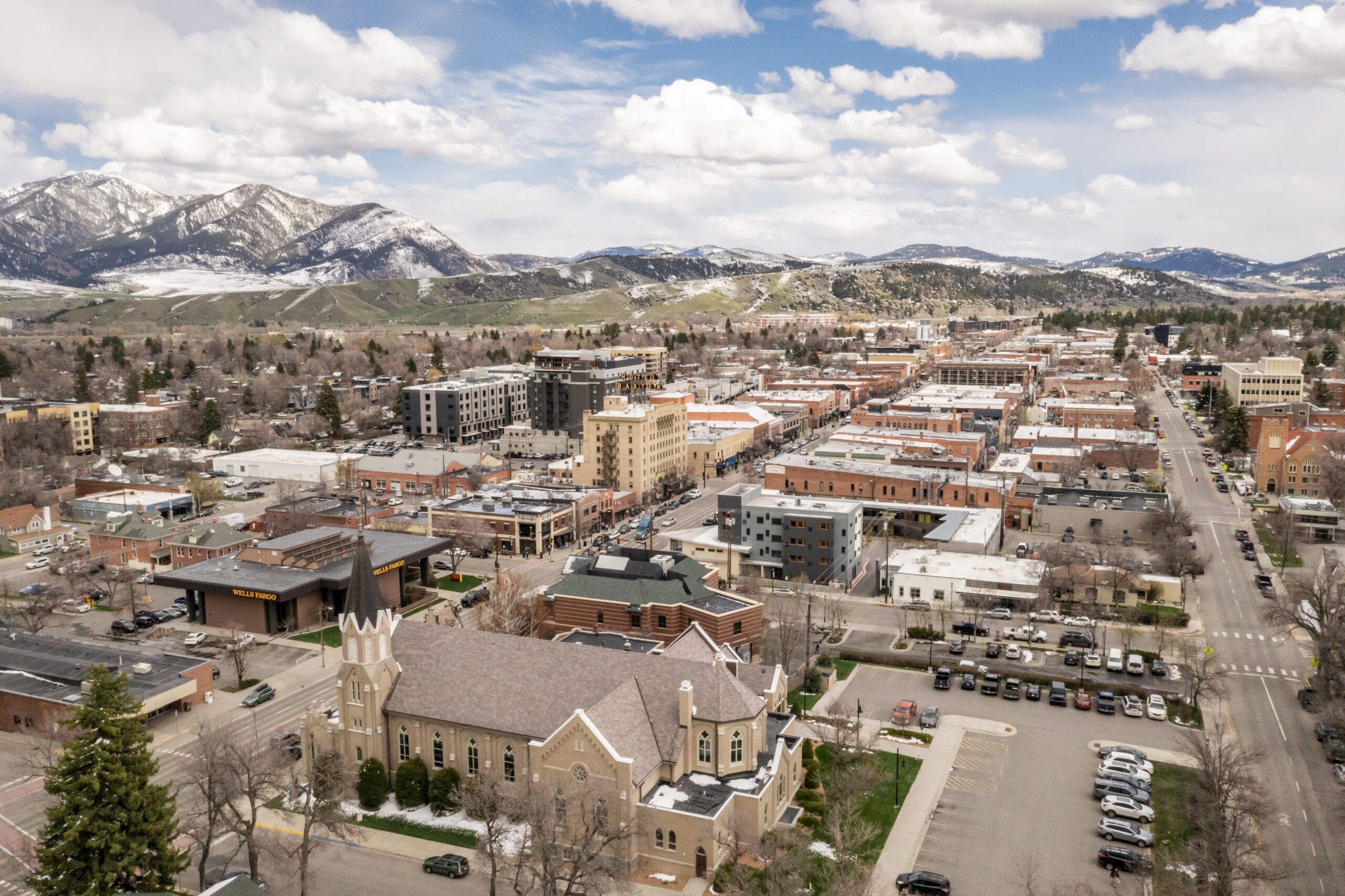Co-founder of Patagonia says we need to stop death of wild outdoors

Todd Wilkinson EBS Environmental Columnist
Nick Paumgarten’s profile of Yvon Chouinard in the Sept. 19 issue of The New Yorker magazine is being widely circulated and causing quite a stir.
A stir of deserved reverence, again, for the man. Of fascination for a larger-than-life, almost mythical figure who actually is a humble, self-deprecating introvert who spends part of the year in Jackson Hole. And, a stir of discomfort for the way Paumgarten’s writing holds up a mirror to the pervasive attitudes of the Patagonia faithful dwelling in outdoor lifestyle communities or longing to inhabit them.
Among recreationists (and who isn’t a recreationist in Greater Yellowstone?), some are responding defensively, in the same way thin-spined Minnesotans, with no appreciation for irony, reacted to the portrayal of their culture in the Coen Brother’s Scandihoovian film noir, “Fargo.”
Paumgarten’s story, “Wild Man: Patagonia’s philosopher-king,” should be mandatory reading for all of us in the West who head to the untrampled woods, mountains and rivers, because it raises important questions about the persistence of a rare wild region like Greater Yellowstone in the face of rising population pressure.
What The New Yorker piece (yes, think of the irony of that) drives home is that each of us is a consumer—of both material goods (whose manufacturing comes with costs to the environment) and of landscapes (the volume, intensity and type of human presence) exacting slow-to-comprehend negative consequences for that thing we call wildness.
On Planet Earth, with humans still engaged in various modern forms of Manifest Destiny, wildness is in short and dwindling supply. There are no pieces of terra incognita lying on the other side of the next ridge waiting to be conquered by neo-adventurers; even the conceit of the premise is a ruse. Which is why Paumgarten’s take on Chouinard, one of the true modern exemplars of outdoor funhoggism, is so chastening.
Chouinard and his wife, Malinda, are renowned for striving to do the right things not because they are popular but very often because they are not; because they are not driven by rational self-interest, or because they crave attention, or because they’re easy. They’ve become thought leaders by promoting social consciousness within their iconic clothing company. Patagonia has very publicly committed itself to reducing its waste in production and impact on the environment with the raw materials it sources, using profits to give back to landscape protection, being founders of 1 % For The Planet, and treating employees with respect and dignity.
This fall, an updated version of Mr. Chouinard’s critically acclaimed book, “Let My People Go Surfing: The Education of a Reluctant Businessman” was published and it features a foreword from the rabble-rousing Canadian gadfly of capitalism, Naomi Klein.
For his New Yorker story, Paumgarten, who briefly worked at Patagonia’s mail-order headquarters when it was once located in Bozeman (and he, too, was an impressionable young funhog), wrestles with the company’s unavoidable contradictions, just as Chouinard himself does— of a brand setting the pace for how to be eco-conscious and yet inspiring generations to reject limitations in their own pursuit of adventure.
Paumgarten asserts it’s a label that appeals to consumers who typically are not wanting in their ability to possess creature comforts while dwelling and playing in landscapes that are beyond the reach of most other people who deal with the lashes of desperate necessity instead of self-indulgent rendezvous with the pain of toe blisters and lactic acid.
Pointing to the image of outdoor chic projected by the Patagonia catalogue, Paumgarten writes: “The lifestyle, to a large swath, is unaffordable, if not in pure monetary terms (outdoor adventure is not in itself expensive, necessarily, although the clothing for sale certainly is), then at least in terms of time, talent, energy, and gumption. It isn’t really a lack of funds that prevents most of us from spending half the year sleeping in vans and dodging the park rangers to free-solo the big walls at Yosemite.”
He refers to earlier groundbreaking iterations of the catalogue in the 1990s: “Patagonia’s people were the West’s recolonizers, the next wave of pioneers, the self-appointed protectors asserting a blue-state ethos in red-state territory—tree huggers pitching their tents in a logging camp. By now, this war for the West is a tired one, but it is in some ways a microcosm of the greater global battle between those who want to preserve lands and conserve resources and those who would prefer to exploit them.”
The author then continues to what he interprets as the catalogue’s ethos of today: “In its presentation of hale young adventure athletes, living righteously in Edenic locales, all of them with just the right amount of dishevelment and duct tape, the catalogue can emanate the passive-aggressive piety of a food co-op scolding. It unwittingly celebrates a kind of countercultural conformity. This neo-Rockwellian idyll of desert-dawn yoga sessions, usefully-toned arms and abs, spectacularly perilous bivouacs and bouldering slabs, hardy kids and sporty hounds can feel like a rebuke if you are on a sofa in the city.”
Youch.
Yes, Paumgarten nails the look and attitude; his depiction delivering a hornet sting to those perhaps avoiding the admission that they dwell in bubbles. Might his critique serve as a wake-up call?
From here, Paumgarten goes deeper. (Although the ensuing paragraphs of his piece represent just a small section of the entire profile, it is my hope The New Yorker doesn’t mind me pushing the boundary of free-use just a little in exchange for asserting here, once again, that you really need to read the entire piece and subscribe to this great American magazine).
I am not here to assess whether Paumgarten gets it right or wrong. But this I know after writing about Greater Yellowstone and environmental issues for 30 years: More than ever before, outdoor recreationists, surrogates for some of the biggest outdoor toy manufacturers, are pressuring land management agencies to force the opening of ever-greater access to wildlands now functioning as refugia for solitude-seeking wildlife and which have not had to cope with many people.
Greater Yellowstone is qualitatively different in profound ways from Moab and the swarm of humanity massed along the front ranges of Colorado and Utah. Consumptive recreation models that might be perfectly suited to landscapes that have been tamed and completely ex-urbanized are not appropriate for Greater Yellowstone. We have wildlife values here that are unrivaled. We still have grizzly bears, wolves, functioning epic big game wildlife migrations and solitude. Wilderness with grizzly bears is of a different caliber than wilderness without.
But it doesn’t take a seer to understand what’s coming if human inundation of the backcountry continues apace and public lands continue to feel the constriction of unprecedented growth on private lands. Chew on this figure provided by ecology professor Andrew Hansen at Montana State University: “Nearly 4,000 homes are added to the 20 counties of Greater Yellowstone each year and natural habitats have been lost to development at a rate of about 60,000 acres (2.2 percent) per year since 1970. Thus demand for land and resources are increasing while the habitats that allow fish and wildlife to cope with climate change are decreasing.”
Now consider the figures above and multiply them by 20 to get a conservative sense of the added human pressure on private land that will be squeezing Greater Yellowstone’s public lands by 2036—to say nothing of how much more crowded public trails will become with that many more people plus rising numbers of visitors.
This is where Paumgarten’s narrative about the phenomenon of unchecked self-righteous recreation is poignant. “Eco-conscious fun-hoggery, as an ethos, a culture, a lifestyle, and an industry, spans the world, and even rules some corners of it,” he writes. “Chouinard is its best-known avatar and entrepreneur, its principal originator and philosopher-king, and is as responsible as anyone for guiding it from the primitive tin-can and hobnail aesthetic of the mid-twentieth century to the slackline and dome-tent attitude of today. He has made it more comfortable, and more glamorous, to be outside, in harsh conditions. His influence is way out of proportion to his revenue footprint.”
And here is Chouinard’s coup de grace, which Paumgarten highlights with emphasis. Chouinard recognizes there are limits to the ethos and pathos of conquest, and while fun-hoggery can be a medium by which young recreationists are eventually transformed into conservationists, every individual, like it or not, bears personal responsibility to refrain from consuming the rare, finite, and few remaining wild places merely because we can.
There is power in self-restraint. Native Americans knew one iteration of its discipline through the act of counting coup—demonstrating warrior bravery and honor not by taking the life of an adversary but by touching the foe and backing away. Often, the lament from mountain bikers and pack rafters is: “Well, why should we have to put up with restrictions if hikers or equestrians or anglers don’t?”
That, of course, isn’t the right question yet it marks the point of separation between recreation and conservation. The right question is what must all users do—what will they give up— to insure the character of wild places remains?
Not long ago, I interviewed Matthew Kauffman, the renowned ecologist who is overseeing the Wyoming Migration Initiative for a story soon to appear in Jackson Hole Magazine. Although some recreationists insist their presence is benign because they don’t see it with their own eyes, that doesn’t mean it doesn’t exist.
Kauffman says the scientific literature on humans displacing wildlife is clear; eventually, incrementally and sometimes nearly indecipherably, growing numbers of people create cumulative tipping points and beyond them wildlife starts to disappear.
“The effect is always the same. Animals don’t like to be near humans and they alter their behavior in response to human disturbance,” Kauffman told me. “I am an avid mountain biker and I bike in animal range near where I live in Laramie. I frequent areas where there are a lot of moose but I’ve only seen moose two or three times. That doesn’t mean the moose aren’t there but that they’ve moved. Human activity displaces animals. The question we must ask is what are the costs of that displacement? If an animal is fleeing habitat that offers superior forage or escape cover from predators or deep snowpack for less optimal areas, that is a concern.”
In his New Yorker piece, Paumgarten suggests Chouinard feels responsible for helping to fuel the attitude of unreflective conquest that neither knows nor recognizes bounds. “He has mixed feelings about all this—some apprehension about the world he has made. He celebrates the spread of ecological consciousness but laments the disappearance of danger and novelty, and the way that the wilderness has become a hobby, or even a vocation.”
Citing Chouinard’s concerns about how quaint outdoor sporting pursuits can quickly grow to industrial strength levels, Paumgarten adds: “He disdains ski areas (‘They’re golf courses’), the idea of professional climbing (‘I just don’t like the whole paid-climber thing’), and the proliferation of extreme sports as programming and marketing (‘Red Bull’s in the snuff-film business’).”
Paumgarten then relates an exchange he and Chouinard had. “When I ventured to mention how the catalogue sometimes irked me, he [Chouinard] was quiet for a while, and then said, ‘When you see the guides on the Bighorn, they’re all out of central casting. Beard, bill cap, buff around the neck, dog in the bow. Oh, my God, it’s so predictable. That’s what magazines like Outside are promoting. Everyone doing this ‘outdoor lifestyle’ thing. It’s the death of the outdoors.’”
Read that last line again carefully. Yes, Yvon Chouinard says the outdoor lifestyle thing is leading to the death of the outdoors.
A close influential friend of Chouinard’s, a fellow die-hard angler, business person and conservationist, told me this: “Paumgarten humanizes Chouinard but he didn’t go far enough. Objectively, knowing him, I would say here you have a guy with unwavering ethical and conservation principles who never found a comfortable connection to the idea of profit motive.
What happened, objectively, is he became a corporate executive by default, ending up with a company that was wildly successful beyond his own imagination. But he never figured out how to gather all these funhog sycophants around without preventing them from going over the top.”
Instead of recoiling from his thoughts in The New Yorker piece, I think we ought to be praising Chouinard for bravely stepping forward and saying things we know are true—consumption of the wild outdoors at the cost of its persistence— but we’ve been unwilling to admit. Why? Because it hasn’t been fashionable to say no to anything in a self-focused world.
This past summer, the Chouinards were visiting close friends in Bozeman and Yvon told me that once upon a time he poached the Black Canyon of the Yellowstone River inside Yellowstone National Park—but he certainly isn’t in favor of forcibly opening park river ways to pack rafting. He cites the industrialization of floating that overtook the Merced River in Yosemite where he spent his youth climbing.
In fact, at the 2015 SHIFT outdoor recreation festival in Jackson Hole, Chouinard and noted science writer and paddler David Quammen—two of SHIFT’s keynote speakers—said they opposed the pack rafters trying to push another human use on the park. (One wonders and I mean no disrespect: do the organizers of SHIFT understand their reasons why? Do they see where growth trends are leading? Do they grasp what Greater Yellowstone’s uniqueness in the world is? A criticism of SHIFT by attendees in recent years is that it’s been long on promoting recreational access and short on real conservation.)
These days, Chouinard is saying something else: He’s saying it ought to be fashionable and self-satisfying for humans to set aside places of primacy for rare beings like grizzly bears, that humans ought not to aspire to hog all of earth for their own exploits when so much already has been taken.
If Greater Yellowstone is going to maintain its wild character, for wild creatures and places that can’t advocate for themselves, what will it take to keep them from ruination, from becoming reflections of Moab or the Front Ranges of Colorado and Utah? What little wildness remains is all there is, but given prevailing attitudes, for how long? How much time it has is up to us.
Todd Wilkinson has been a journalist for 30 years. He is author the recent award-winning book “Grizzlies of Pilgrim Creek: An Intimate Portrait of 399, the Most Famous Bear of Greater Yellowstone,” featuring 150 astounding images by renowned American nature photographer Thomas Mangelsen. EBS publishes Wilkinson’s New West column every week online and twice a month in the printer version of the paper, under a partnership arrangement with the Wyoming online journal thebullseye.media. We encourage you to check out The Bullseye.













